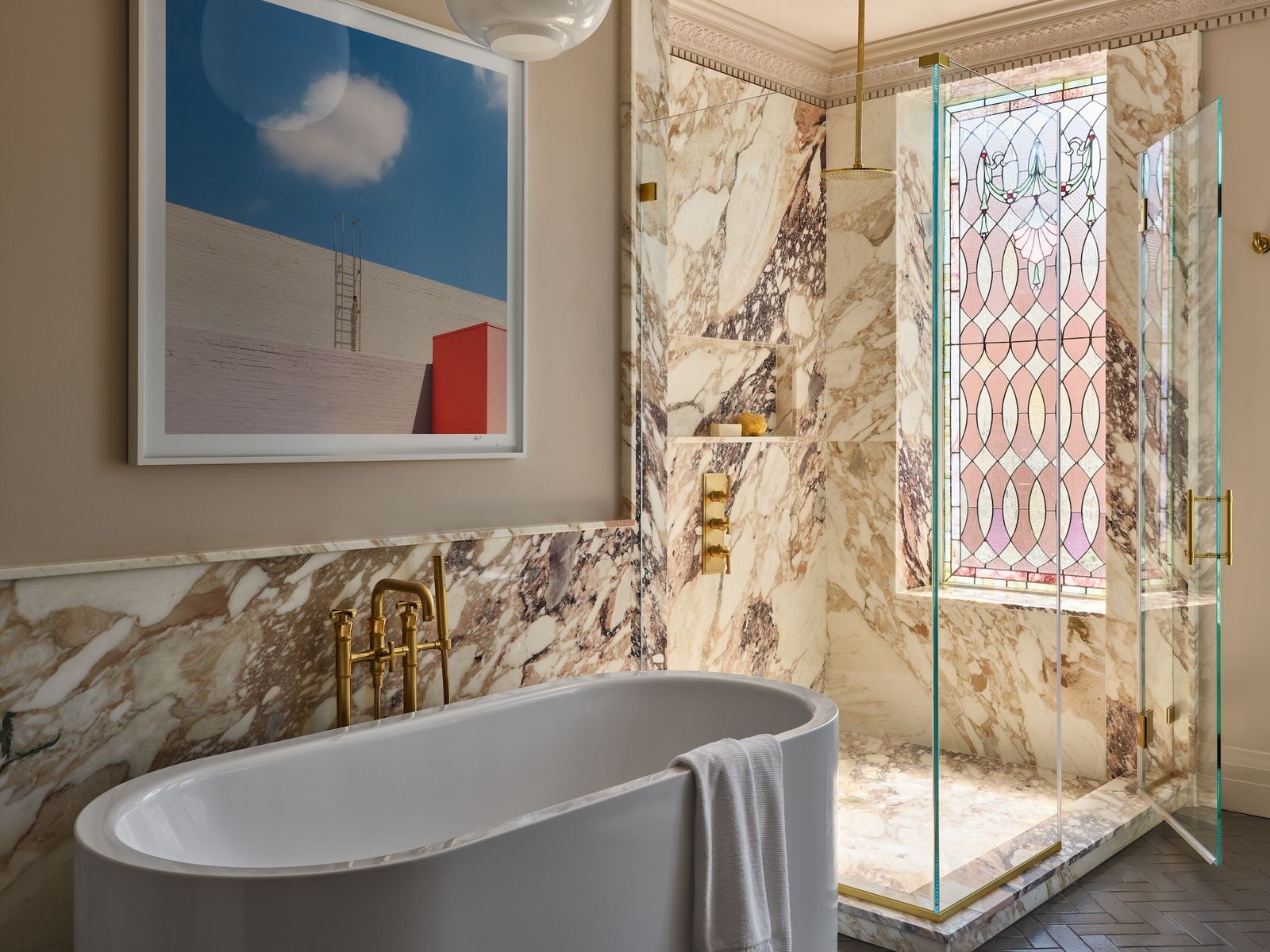Welcome to How They Pulled It Off, where we take a close look at one particularly challenging aspect of a home design and get the nitty-gritty details about how it became a reality.
The Transformation of a Park Slope Townhouse
The owner of a classic early 20th-century Park Slope, Brooklyn, townhome lived in the home for well over three decades before deciding to have it completely refreshed. Already well into their "empty nester" phase, they wanted to reimagine the 3,800-square-foot home to better accommodate their new lifestyle—largely centered on entertaining friends and visiting family. After touring a similar property down the street that was meticulously updated by interior architect Merrill Lyons, principal of Lyons Studio, they called on her to revamp the home and apply her distinctive approach. "They’d done some small updates over the years but nothing of tremendous significance and this was their chance to do what they had dreamed of for so long," says Lyons.


Balancing Historical Preservation with Modernization
Her goal was to create a modernized home that still retains key historical features; the winning characteristic of a space for which the owners had been stewards of for so long. "When we first walked through the home, there was an overwhelming amount of dark Victorian wood detailing," the architect adds. "While impressive and beautiful, we knew that in order to implement upgrades that the home required, we would have to edit out some ornamental features."
On the main parlor level, Lyons and her team opened up what had been dark, closed-off spaces and narrow hallways. The same strategy was used in the bedrooms and bathrooms on subsequent floors. Much of the internal systems—plumbing, electrical, and HVAC—were replaced, as were the well-worn floors and crown moldings no longer up to code.


The Power of Color and Unconventional Materials
"The homeowners steered toward a more contemporary style," Lyons says. "They especially had an affinity for using high contrast elements of black and white so it was a brave move for them to trust us in our expansive use of color. We played with the use of eclectic pieces, color, and texture to contextualize the finishes and furnishings in the home. The mix of historic and contemporary designs play off each other beautifully and it’s the kind of space that is inviting and interesting at the same time."

The Practical Approach to Stone Selection
Lyons takes a particularly pragmatic approach when it comes to choosing the right marbles and stones in her projects. The constraints, as with any other finish or fixture, are budget and performance; how well the material can hold up to wear and tear. After that, it comes down to aesthetics, figuring out what color and vein structure would be the best to bring out existing tones and textures of a room. "We also consider where stone is going and how we can make it unique with fabrication details and laying out the pieces that utilize the parts of the slabs," she concludes. "In New York, we’re spoiled for choice when it comes to finding a stoneyard, and yet sourcing obscure materials here still requires a lot of back and forth trips. Oftentimes, finding the right type of stone is just the beginning of the process but it takes relentless searching."
How They Pulled It Off: The Right Stone to Transform a Space
- Consider cost and durability as much as aesthetics: A stone might primarily be chosen for its visual qualities, what a color or vein structure provides in terms of texture or mood. But when considering where and how it might be used (as a kitchen backsplash or fireplace hearth), durability, and of course, cost needs to be taken into consideration. Someone might want a particularly expensive marble for their kitchen and later realize that it doesn’t hold up to repeated use and staining.
- Stones that play-off and riff-on existing features: The materials brought into a space—historical or new—should reflect its visual and aesthetic conditions: how light moves through but also what function it serves. One should take in account the layout of the space and what key features need to be accentuated.
- Using your resources the right way: Stoneyards can be found in most places. The trick is not to settle for the first, most obvious options and to instead dig a bit deeper in looking for material that best matches your specific requirements. Working with skilled craftspeople or fabricators is also essential.
"I sometimes like to joke that we don’t use ‘normal’ stone and perhaps this project is a good example of that," Lyons says. "Amazingly colorful and unusual marble makes this home what it is in many ways."
Project Credits:
Architect of Record: Giulio Zoida, GZ & NC Code Consulting
Builder/General Contractor: Delta Contractors
Structural Engineer: Blue Sky Design
Lighting and Interior Design: Merrill Lyons, Lyons Studio / @lyonsstudio




Comments
Join Our Community
Sign up to share your thoughts, engage with others, and become part of our growing community.
No comments yet
Be the first to share your thoughts and start the conversation!